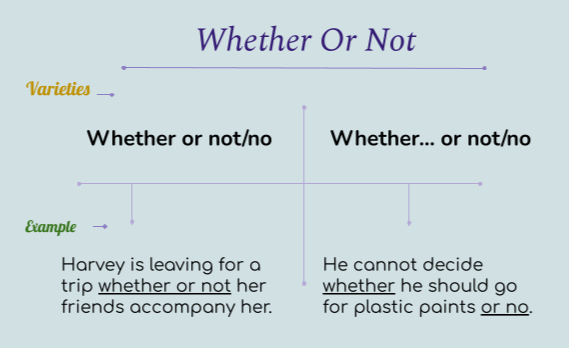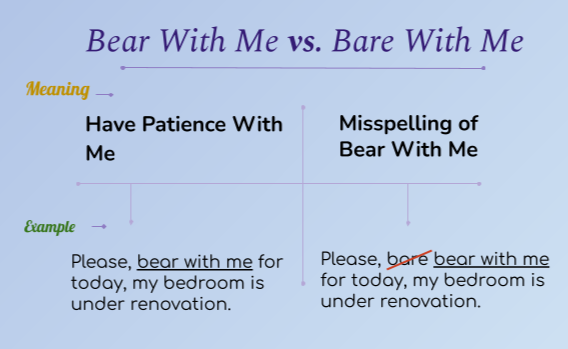How to Use "Nor" Properly in Sentences with Example
Nor is a conjunction often used with words like "neither" and "not." This article will explore the various ways to use "nor" in a sentence and provide examples for better understanding.
How to Use Nor?
1. Using "Nor" as a Coordinating Conjunction
"Nor" is a coordinating conjunction that connects words, phrases, or clauses of equal rank. It is used in conjunction with other negation words, such as "neither" and "not," to form what is known as a correlative pair.
Examples:
- Neither Sam nor Emily attended the party.
- The restaurant serves neither meat nor dairy products.
- The team was neither motivated nor prepared for the game.
- She can neither sing nor dance.
2. Using it in a Verb Agreement
In a correlative pair, such as "neither...nor" the number of the component closest to the verb also affects the verb number.
Consider the following examples:
- Neither the cats nor the dog is allowed on the couch.
- Neither the book nor the magazines belong to me.
- Neither the flowers nor the trees need watering.
- Neither the teacher nor the students have arrived yet.
3. Using to introduce negative alternatives
"Nor" is often used to introduce negative alternatives. It is employed when neither of the options is applicable or desirable.
Consider the following examples:
- She has neither the time nor the inclination to watch television.
- I have neither the money nor the patience to go shopping.
- He possesses neither the skills nor the experience required for the job.
- The concert attracted neither the locals nor the tourists.
4. Using it to Ensure Grammatical Parallelism
When using "neither...nor," it is important to frame grammatically parallel expressions. This means the components connected by "neither" and "nor" should have the same structure.
For example:
- Neither the rain falling heavily nor the thunderstorm raging outside deterred the hikers.
- Neither the high temperatures nor the humidity affected her performance.
- Neither the noise from the construction nor the traffic bothered him.
5. Using the word in Negating Multiple Items in a List
When negating numerous items in a list, use it before each item following the introductory component. This ensures clarity and emphasis on the negation.
For example:
- She didn't like the taste of fish, nor did she enjoy eating vegetables.
- He didn't attend the meeting, nor did he provide any explanation.
- They didn't approve the proposal, nor did they offer any viable alternatives.
- I neither received the email nor the package I was expecting.
Common Mistakes While Using "Nor" in a Sentence
When using the coordinating conjunction "nor" in a sentence, it's important to be mindful of some common mistakes that people often make. By avoiding these errors, you can ensure the clarity and correctness of your writing. Let's explore these common mistakes and provide examples of how to correct them.
Using "nor" without a correlative pair
One common mistake is using "nor" without a correlative pair, such as "neither...nor" or "not...nor." The correlative pair helps establish the appropriate negative construction. Here's an example of the incorrect usage:
Incorrect: He didn't like fish, nor the taste of vegetables.
Correct: He neither liked fish nor enjoyed the taste of vegetables.
In the correct version, the correlative pair "neither...nor" is used to negate fish liking and the enjoyment of vegetable taste properly.
Repeating "neither" in a correlative pair
Another mistake to avoid is repeating the word "neither" in a correlative pair. The term "neither" should be used only once in the sentence. Here's an example of the incorrect usage:
Incorrect: Neither John nor neither Peter attended the seminar.
Correct: Neither John nor Peter attended the seminar.
In the correct version, "neither" is used only once to establish the negation of John and Peter attending the seminar.
Inconsistent structure in the sentence
Maintaining a parallel structure is important when using it in a sentence. The sentence structure should remain consistent without repeating the subject or auxiliary verb. Here's an example of the incorrect usage:
Incorrect: The store has neither apples nor it has oranges.
Correct: The store has neither apples nor oranges.
In the correct version, the structure is parallel, and the subject "it" and the auxiliary verb "has" are not repeated after "nor."
Inconsistent verb form in a correlative pair
Another mistake to avoid is inconsistent verb form within a correlative pair. The verb form should remain consistent throughout. Here's an example of the incorrect usage:
Incorrect: We are neither coming nor did we plan to come.
Correct: We are neither coming nor planning to come.
In the correct version, the verb form "planning" maintains consistency with the verb form "coming" in the correlative pair.
Conclusion
Understanding this word in a sentence is crucial for clear and effective communication. You can enhance your writing skills by employing it as a coordinating conjunction, ensuring proper verb agreement, and using it to introduce negative alternatives or negate multiple items in a list.
Remember to avoid common mistakes and strive for grammatical precision. Mastering "nor" will enable you to construct well-structured sentences that accurately convey your intended meaning.
Grammar
Read More
- How to Use "Therefore" in Sentences Avoiding Common Mistakes
- How to Use "Whereas" with Examples and Avoid Common Mistakes
- When and How to Use "Thus" Correctly Without Common Mistakes
- How to Use "On the Contrary" Properly with Meaning and Examples
- When and How to Use "Either/Or" with Examples and Common Mistakes to Avoid
- How to Use "On the Other Hand" Effectively without Mistakes
- How to Use "Respectively" with Example and Common Errors to Avoid
- How and When to Use "Moreover" Without Mistakes
- How to Use "Likewise" in Sentences Based on Context & When not to Use
- When & How to Use "Although" in Sentences to Avoid Mistake



